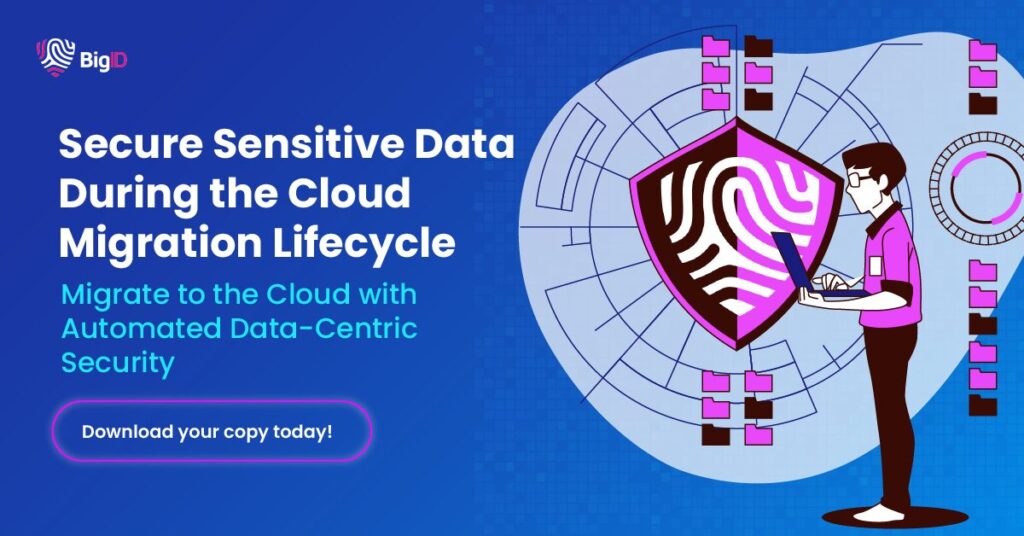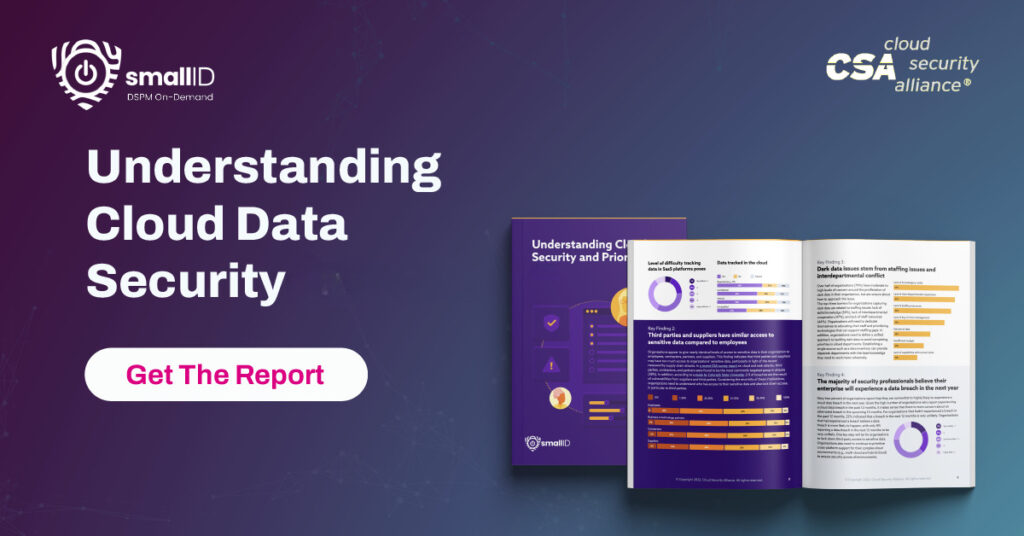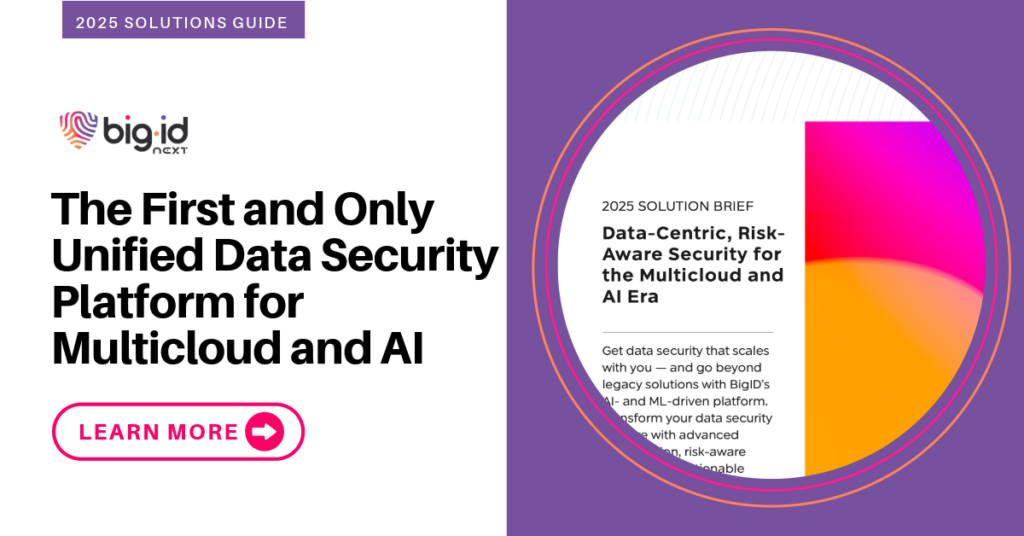Unlocking the Power of Cloud Data Management: Strategies for Success
Data security and compliance are top concerns for organizations moving to the cloud, with 94% of enterprises citing security as their biggest challenge in cloud adoption. Effective cloud data management is crucial for addressing these concerns and ensuring data protection and regulatory compliance.
Organizations that invest in cloud data management technologies and practices experience an average 25% reduction in operational costs and a 30% increase in time-to-market for new products and services, highlighting the business benefits of effective cloud data management.
What is Cloud Data Management?
Cloud data management refers to the practice of storing, organizing, and securing data in remote servers accessed via the internet, rather than on local hardware or infrastructure. It involves the use of cloud computing services and platforms provided by third-party vendors to manage various aspects of data, including storage, processing, backup, and retrieval.
Imagine your organization’s data as a valuable asset stored in a virtual vault located in the cloud. Cloud data management is like having a team of expert caretakers responsible for managing and protecting that vault, ensuring that your data remains safe, accessible, and optimized for your needs.
Why is Protecting Cloud Data Important?
In today’s digital age, cloud data management is like having a supercharged brain for your business. Think about it: everything we do generates data – from emails and documents to website visits and social media interactions. And all this data holds valuable insights that can help us make better decisions, drive innovation, and stay ahead of the competition.
Cloud data management takes this idea to the next level by giving us a central hub to store, organize, and analyze all that data. It’s like having a giant warehouse where we can keep everything safe and sound, while also making it easily accessible from anywhere, anytime. And because it’s in the cloud, we can scale up or down as needed, without having to worry about running out of space or dealing with clunky hardware.
But it’s not just about storage – it’s about what we do with that data. With cloud data management, we can unleash the power of advanced analytics and artificial intelligence to uncover hidden patterns, predict future trends, and personalize experiences for our customers. We can break down silos between departments, enabling collaboration and innovation across the entire organization. And we can stay agile and responsive in a fast-paced, ever-changing world.
So, in this digital age, cloud data management isn’t just important – it’s essential. It’s the key to unlocking the full potential of our data, driving growth, and shaping the future of our businesses. And by embracing it now, we’re not just keeping up with the times – we’re paving the way for a brighter, more connected future.

Embracing Cloud Storage: A Paradigm Shift in Data Management
Gone are the days of sprawling on-premises data centers and cumbersome storage infrastructure. With cloud storage solutions, organizations can transcend the limitations of traditional storage architectures, unlocking unparalleled scalability, and cost-efficiency. Whether leveraging public cloud providers or deploying hybrid cloud environments, cloud storage empowers businesses to seamlessly scale their data infrastructure in tandem with evolving needs, all while ensuring data integrity and accessibility.
Here’s a breakdown of what cloud data management entails:
- Storage: Instead of storing data on physical servers or devices within your premises, cloud data management stores it on secure servers hosted by cloud service providers. These providers offer scalable storage solutions, allowing you to adjust your storage capacity based on your needs without the hassle of managing physical hardware.
- Organization and Structure: Cloud data management involves structuring and organizing your data in a way that makes it easy to find, retrieve, and analyze. This often includes using databases, data lakes, or data warehouses to store and categorize information according to specific criteria, such as type, purpose, or access level.
- Security: Protecting data from unauthorized access, breaches, or loss is a critical aspect of cloud data management. It involves implementing robust security measures such as encryption, access controls, authentication protocols, and monitoring systems to safeguard sensitive information and ensure compliance with data protection regulations.
- Accessibility and Availability: Cloud data management enables authorized users to access data from anywhere with an internet connection, using various devices such as computers, smartphones, or tablets. This accessibility promotes collaboration, flexibility, and productivity among teams working remotely or across different locations.
- Backup and Disaster Recovery: Cloud data management includes provisions for backing up data regularly and implementing disaster recovery strategies to minimize the impact of potential data loss or system failures. By replicating data across multiple locations and providing mechanisms for quick recovery, it ensures business continuity and resilience against unforeseen disruptions.
Understanding Cloud Infrastructure and its Nuances
Cloud infrastructure refers to the foundational components and resources provided by cloud service providers to enable the delivery of computing services over the internet. It encompasses a wide range of hardware, software, networking, and storage resources that are dynamically provisioned and managed to support various cloud computing models, including Infrastructure as a Service (IaaS), Platform as a Service (PaaS), and Software as a Service (SaaS). Here’s a breakdown of the key components and nuances of cloud infrastructure:
Virtualization
Cloud infrastructure relies heavily on virtualization technologies to abstract physical hardware resources and create virtualized computing environments that can be dynamically allocated to users as needed. Virtualization enables the efficient utilization of physical resources, improves scalability, and facilitates workload isolation and mobility.
Compute Resources
Cloud infrastructure provides scalable compute resources in the form of virtual machines (VMs) or containers, allowing users to deploy and run applications and workloads without the need to manage underlying hardware. Compute resources are provisioned based on demand, enabling organizations to scale compute capacity up or down dynamically to meet changing workload requirements.
Storage Services
Cloud infrastructure offers a variety of storage services to store and manage data effectively. This includes object storage, block storage, and file storage solutions, each optimized for different types of data and use cases. Storage services are highly scalable, durable, and accessible over the internet, enabling organizations to store and retrieve data reliably and cost-effectively.
Networking Infrastructure
Cloud infrastructure includes a robust networking framework that provides connectivity between various components and services within the cloud environment, as well as connectivity to external networks and users. This includes virtual networks, load balancers, firewalls, and other network services that enable secure and efficient communication between cloud resources.
Security and Compliance
Cloud infrastructure incorporates comprehensive security measures to protect data, applications, and infrastructure from unauthorized access, data breaches, and other security threats. This includes encryption, identity and access management (IAM), network security, and compliance frameworks designed to meet regulatory requirements and industry standards.
Scalability and Elasticity
One of the key advantages of cloud infrastructure is its ability to scale resources up or down dynamically in response to changing workload demands. Cloud services are designed to be highly scalable and elastic, allowing organizations to expand or contract their infrastructure as needed without disruption to operations.
Resilience and High Availability
Cloud infrastructure is engineered for resilience and high availability, with built-in redundancy, failover mechanisms, and disaster recovery capabilities to ensure continuous operation and data integrity. Cloud providers operate multiple data centers across geographic regions, enabling fault tolerance and disaster recovery strategies to mitigate the impact of outages or disruptions.
Cost Management
Cloud infrastructure offers flexible pricing models that allow organizations to pay only for the resources they consume, eliminating the need for upfront capital expenditures and providing greater cost predictability. Cloud providers offer tools and services to optimize resource utilization, monitor costs, and manage budgets effectively.
In summary, cloud infrastructure provides a flexible, scalable, and cost-effective platform for delivering computing services over the internet. Its nuances lie in its virtualized nature, scalable compute and storage resources, robust networking capabilities, security features, and focus on scalability, resilience, and cost management. Understanding these nuances is essential for organizations seeking to leverage cloud infrastructure to support their digital transformation initiatives and achieve their business objectives.

Unlocking the Benefits of Cloud Data Management
The benefits of embracing cloud data management extend far beyond mere convenience. From enhanced scalability to streamlined operations, cloud computing offers a myriad of advantages for businesses seeking to stay ahead in a competitive landscape. By leveraging cloud storage solutions, organizations can liberate themselves from the constraints of traditional infrastructure, enabling seamless access to data anytime, anywhere. Moreover, the agility afforded by cloud platforms empowers enterprises to innovate faster, respond to market dynamics more effectively, and drive sustainable growth.
Let’s explore the tangible and intangible benefits of cloud data management, along with examples:
Cost Savings (Tangible Benefit)
Example: A large financial institution saved millions by migrating its data storage to the cloud, eliminating the need to maintain expensive on-premises servers and reducing operational costs associated with maintenance and upgrades. This freed up budget for investing in advanced cybersecurity measures and talent acquisition for their security team.
Scalability (Tangible Benefit)
Example: A growing e-commerce platform experienced sudden spikes in user traffic during holiday seasons. By leveraging cloud data management, they seamlessly scaled up their infrastructure to accommodate the increased demand, ensuring smooth performance without costly investments in additional hardware or infrastructure upgrades.
Improved Accessibility (Tangible Benefit)
Example: A global enterprise with distributed teams benefited from cloud-based data management, enabling employees to access critical data and applications from anywhere with an internet connection. This facilitated remote collaboration, streamlined workflows, and allowed for real-time decision-making, ultimately driving operational efficiency and business continuity.
Enhanced Data Security (Intangible Benefit)
Example: A healthcare organization strengthened data security and compliance by migrating sensitive patient information to a HIPAA-compliant cloud platform. With robust encryption, access controls, and audit trails, they ensure data integrity and confidentiality while maintaining regulatory compliance, building trust with patients and stakeholders.
Increased Agility (Intangible Benefit)
Example: A software development company accelerated its release cycles by leveraging cloud-based DevOps tools and environments. With on-demand resources and automated deployment pipelines, they reduced time-to-market for new features and updates, staying ahead of competitors and meeting customer demands more effectively.
Heightened Reliability (Intangible Benefit)
Example: A manufacturing firm minimized downtime and data loss risks by replicating critical data across multiple geographic regions using cloud-based disaster recovery solutions. In the event of a hardware failure or natural disaster, they could quickly restore operations and data integrity, ensuring business continuity and customer satisfaction.
Crafting a Comprehensive Cloud Data Management Strategy
In today’s digital landscape characterized by rapid cloud adoption, organizations must prioritize the development of a robust cloud data management strategy to effectively leverage the benefits of cloud technology while ensuring the security, integrity, and accessibility of their data assets. A well-crafted strategy should encompass a series of steps aimed at optimizing data management practices across the organization. Below are the key steps to consider when formulating a comprehensive cloud data management strategy:
1. Assessment of Current Data Landscape
Begin by conducting a thorough assessment of your organization’s current data landscape. Identify existing data sources, storage systems, and data management processes both on-premises and in the cloud. Evaluate the volume, variety, velocity, and veracity of data to gain insights into data usage patterns, storage requirements, and data governance needs.
2. Define Data Management Objectives
Clearly articulate the objectives and goals of your cloud data management strategy. Determine key priorities such as improving data accessibility, enhancing data security, optimizing data storage and retrieval processes, ensuring regulatory compliance, and fostering data-driven decision-making across the organization.
3. Select Appropriate Cloud Data Services
Evaluate different cloud service providers and their offerings to select the most suitable cloud data services for your organization’s needs. Consider factors such as scalability, reliability, security features, data residency requirements, and integration capabilities. Choose a cloud deployment model (public, private, hybrid) that aligns with your organizational goals and compliance obligations.
4. Data Governance and Compliance
Establish robust data governance policies and procedures to ensure the integrity, confidentiality, and compliance of data stored in the cloud. Define data ownership, access controls, data classification standards, and data retention policies. Implement encryption, authentication, and auditing mechanisms to safeguard sensitive data and comply with regulatory requirements such as GDPR, HIPAA, or industry-specific standards.
5. Data Migration and Integration
Develop a data migration plan to seamlessly transfer existing data assets to the cloud environment while minimizing disruption to business operations. Implement data integration solutions to enable seamless data flow between on-premises systems and cloud-based applications, ensuring data consistency and coherence across disparate data sources.
6. Data Backup and Disaster Recovery
Implement robust data backup and disaster recovery strategies to mitigate the risk of data loss and ensure business continuity in the event of unforeseen incidents or disasters. Leverage cloud-based backup and recovery solutions to automate data backups, replicate data across geographically dispersed data centers, and enable rapid data restoration capabilities.
7. Data Lifecycle Management
Implement data lifecycle management practices to optimize the storage, retention, and disposition of data throughout its lifecycle. Define policies for data archiving, data deletion, and data purging based on business requirements, regulatory compliance, and data access patterns. Leverage cloud-native tools and services to automate data lifecycle management tasks and optimize storage costs.
8. Data Monitoring and Performance Optimization
Implement robust monitoring and performance optimization mechanisms to proactively identify and address issues related to data availability, performance bottlenecks, and resource utilization in the cloud environment. Utilize cloud monitoring tools and analytics platforms to gain insights into data usage patterns, identify optimization opportunities, and ensure optimal performance of cloud data services.
9. Employee Training and Skill Development
Invest in employee training and skill development initiatives to enhance the competencies of your workforce in cloud data management practices. Provide comprehensive training programs on cloud technologies, data governance best practices, security protocols, and compliance requirements to empower employees with the knowledge and skills needed to effectively manage data in the cloud environment.
10. Continuous Improvement and Adaptation
Foster a culture of continuous improvement and adaptation to evolving cloud technologies, industry trends, and regulatory requirements. Regularly review and update your cloud data management strategy to incorporate new capabilities, address emerging challenges, and capitalize on opportunities for innovation and optimization in data management practices.
By following these steps and adopting a forward-thinking approach to cloud data management, organizations can establish a solid foundation for leveraging the full potential of cloud technology while ensuring the security, reliability, and accessibility of their data assets in today’s digital age.
Similarities and Differences Between Public and Private Cloud Data Management
Public Cloud Data Management
Think of the public cloud like a massive shared playground where companies rent space to store and manage their data. It’s like leasing a locker at a gym – convenient and cost-effective because you only pay for what you use. In the public cloud, your data resides on servers owned and managed by a cloud provider like Amazon Web Services (AWS), Microsoft Azure, or Google Cloud Platform. They handle all the heavy lifting – maintaining the servers, ensuring security, and keeping things running smoothly. You access your data over the internet, and it’s available from anywhere, anytime.
Private Cloud Data Management
Now, imagine a private club where you have your own exclusive space. That’s the private cloud. It’s like having your own dedicated server room, but instead of being on-site, it’s hosted off-site by a cloud provider or within your organization’s data center. Your data is kept separate from others, providing more control and customization options. Private clouds are great for sensitive data or industries with strict compliance requirements like healthcare or finance.
Risks and Governance Challenges
No matter which cloud you use, there are risks and governance challenges to consider. With public clouds, you’re sharing resources with other users, which can raise concerns about data privacy, security breaches, and compliance issues. Plus, you’re at the mercy of the cloud provider’s policies and practices. On the other hand, private clouds come with their own set of challenges. They require more upfront investment and expertise to set up and maintain. Plus, you’re responsible for all aspects of security and compliance, which can be daunting.
Overcoming Cloud Data Risks and Governance Challenges
To combat these risks and governance challenges, it’s essential to have a solid strategy in place. This includes:
- Risk Assessment: Identify potential risks and vulnerabilities in your cloud environment, such as data breaches, unauthorized access, or service outages.
- Security Measures: Implement robust security measures like encryption, access controls, and monitoring to protect your data from threats and unauthorized access.
- Compliance Frameworks: Adhere to industry-specific regulations and compliance frameworks (like GDPR or HIPAA) to ensure that your data management practices meet legal and regulatory requirements.
- Data Governance Policies: Establish clear data governance policies and procedures for data classification, access control, retention, and deletion to maintain data integrity and compliance.
- Regular Audits and Reviews: Conduct regular audits and reviews of your cloud environment to identify any security gaps or compliance issues and take corrective actions promptly.
By addressing these risks and governance challenges proactively and implementing appropriate measures, organizations can effectively manage their data in both public and private cloud environments while minimizing potential threats and ensuring compliance with regulatory requirements.
Types of Cloud Storage Integrations
Common cloud storage integrations involve connecting cloud storage services with various applications, platforms, and infrastructure components to facilitate seamless data storage, retrieval, and management. Here are some of the most common cloud storage integrations:
- Enterprise Applications: Integration with enterprise applications such as customer relationship management (CRM) systems, enterprise resource planning (ERP) software, and productivity suites like Microsoft Office 365 or Google Workspace. This allows organizations to store and access data directly from within their business applications.
- Content Management Systems (CMS): Integration with CMS platforms like WordPress, Drupal, or Joomla, enabling users to store media files, documents, and other content in the cloud and embed them directly into web pages or posts.
- Backup and Disaster Recovery Solutions: Integration with backup and disaster recovery solutions to automatically replicate data from on-premise or primary cloud storage to secondary storage locations for data protection and business continuity purposes.
- File Sharing and Collaboration Tools: Integration with file sharing and collaboration platforms such as Dropbox, Box, or OneDrive, enabling users to sync, share, and collaborate on files stored in the cloud across multiple devices and users.
- Development Platforms: Integration with development platforms and version control systems like GitHub or GitLab, allowing developers to store and manage code repositories in the cloud and collaborate on software development projects.
- Data Warehousing and Analytics Tools: Integration with data warehousing and analytics platforms such as Amazon Redshift, Google BigQuery, or Snowflake, enabling organizations to store and analyze large volumes of data in the cloud for business intelligence and data-driven decision-making.
- Internet of Things (IoT) Devices: Integration with IoT platforms and devices to store and analyze sensor data, telemetry data, and other IoT-generated data streams in the cloud for real-time analytics and insights.
- Archiving and Compliance Solutions: Integration with archiving and compliance solutions to automatically archive, retain, and manage data according to regulatory requirements and industry standards, such as GDPR, HIPAA, or SEC regulations.
- Mobile Applications: Integration with mobile application development platforms and mobile backend as a service (MBaaS) providers, enabling mobile apps to securely store and retrieve data from cloud storage services.
- Identity and Access Management (IAM) Solutions: Integration with IAM solutions like Active Directory, Okta, or Azure Active Directory for centralized authentication, authorization, and access control to cloud storage resources.
These integrations enable organizations to leverage the scalability, flexibility, and cost-effectiveness of cloud storage services while seamlessly incorporating them into their existing workflows, applications, and infrastructure environments.
The Future of Cloud Data Management
As technology continues to evolve at breakneck speed, the future of cloud data management holds boundless possibilities. From the emergence of intelligent data management platforms to the convergence of AI-driven analytics and cloud computing, organizations are poised to unlock unprecedented insights and efficiencies. Moreover, advancements in edge computing and hybrid cloud architectures promise to reshape the data management landscape, enabling seamless integration across disparate environments while maximizing performance and security.
Enhanced Cloud Data Management with BigID
BigID helps organizations proactively approach cloud data management through deep data discovery, risk management, unified security frameworks, continuous monitoring, and compliance reporting. BigID’s industry leading platform for data privacy, security, compliance, and AI data management empowers organizations to gain more visibility and control over their most valuable assets.
With BigID, organizations can:
- Inventory All Data, Everywhere: Automatically discover, inventory, classify, and catalog personal and sensitive cloud data during its entire lifecycle.
- Minimize Duplicate Data: Identify unused, duplicate, unnecessary, or redundant data to be deleted pre- and post-migration to reduce risk.
- Enforce Data Retention: Apply retention policies with automated enforcement by data type, policy, and regulation by identifying, flagging, and deleting duplicate, redundant, and expired data.
- Streamline Breach Response: Detect and investigate data breaches, facilitate prompt incident response, and notify relevant authorities and affected consumers.
- Manage Privacy & Security Risk: Leverage access intelligence to identify overexposed sensitive, personal, and regulated data, enforce policies, and flag violations.
To learn how BigID can help your organization effectively and efficiently manage cloud data — schedule a 1:1 demo today.



